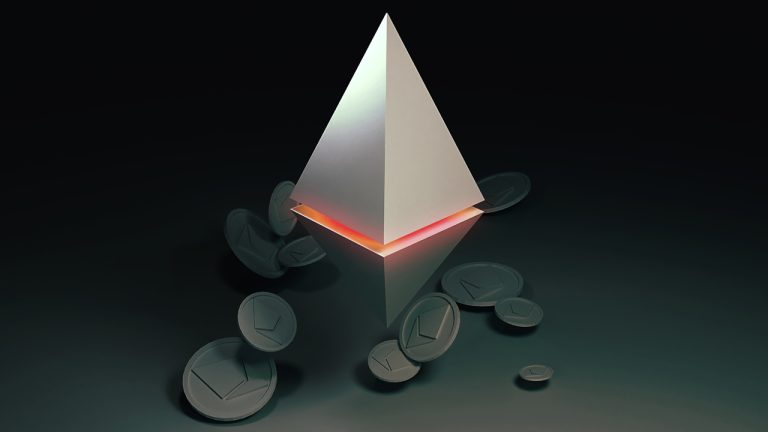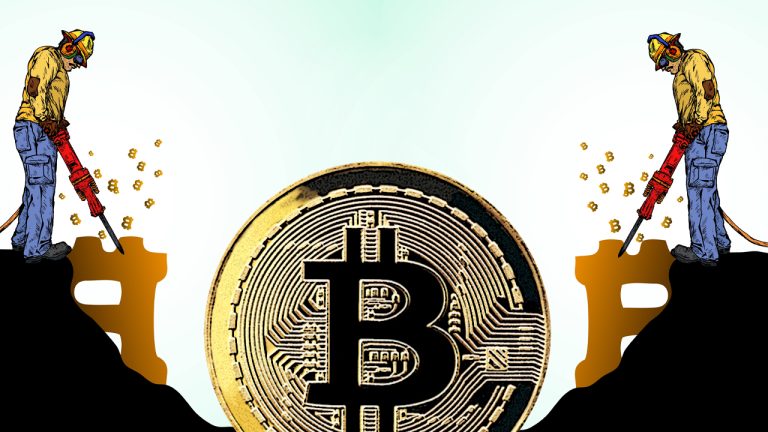 Non-fungible token (NFT) sales have soared this past week, climbing 138.15% higher than the week before. Sales recorded between last Friday and Feb. 24, 2023, indicate that $801 million in NFT sales have been settled over the last seven days. Ethereum Digital Collectibles and Mutant Ape Yacht Club Lead NFT Sales Surge While crypto asset […]
Non-fungible token (NFT) sales have soared this past week, climbing 138.15% higher than the week before. Sales recorded between last Friday and Feb. 24, 2023, indicate that $801 million in NFT sales have been settled over the last seven days. Ethereum Digital Collectibles and Mutant Ape Yacht Club Lead NFT Sales Surge While crypto asset […] After the transition from proof-of-work (PoW) to proof-of-stake (PoS), Ethereum’s annual issuance rate has been reduced to negative 0.057%, according to statistics 158 days after The Merge. The metrics indicate that more ethereum tokens have been removed than issued, and if the chain were still under PoW consensus, 1,823,678 ether would have been minted to […]
After the transition from proof-of-work (PoW) to proof-of-stake (PoS), Ethereum’s annual issuance rate has been reduced to negative 0.057%, according to statistics 158 days after The Merge. The metrics indicate that more ethereum tokens have been removed than issued, and if the chain were still under PoW consensus, 1,823,678 ether would have been minted to […] As Ordinal inscriptions approach the 150,000 mark, blocks larger than 3 MB have become commonplace, with many blocks near the 4 MB range. Meanwhile, after the average transaction fee on-chain rose 122% higher at the beginning of February 2023, the average fee has remained the same over the last few weeks and is currently coasting […]
As Ordinal inscriptions approach the 150,000 mark, blocks larger than 3 MB have become commonplace, with many blocks near the 4 MB range. Meanwhile, after the average transaction fee on-chain rose 122% higher at the beginning of February 2023, the average fee has remained the same over the last few weeks and is currently coasting […] In 2023, the leading crypto assets, such as bitcoin and ethereum, have captured decent gains. Bitcoin has increased 17.2% over the last 30 days, and ethereum has risen 9.3% in the same timeframe. However, year-to-date statistics show that bitcoin is down 38.3%, and ethereum has lost 39.3% against the U.S. dollar. The following presents a […]
In 2023, the leading crypto assets, such as bitcoin and ethereum, have captured decent gains. Bitcoin has increased 17.2% over the last 30 days, and ethereum has risen 9.3% in the same timeframe. However, year-to-date statistics show that bitcoin is down 38.3%, and ethereum has lost 39.3% against the U.S. dollar. The following presents a […] The Blur non-fungible token (NFT) marketplace launched its native token this week, and users who were awarded token allotments received “care packages.” Blur tokens began trading at noon on Feb. 14, reaching a high of $5.02 per token. However, the coin has since dropped more than 85% against the U.S. dollar. BLUR Token Launch Records […]
The Blur non-fungible token (NFT) marketplace launched its native token this week, and users who were awarded token allotments received “care packages.” Blur tokens began trading at noon on Feb. 14, reaching a high of $5.02 per token. However, the coin has since dropped more than 85% against the U.S. dollar. BLUR Token Launch Records […] Amid the controversy surrounding the Ordinals project and the debate over what types of data should be stored on the Bitcoin blockchain, the network mined its largest block, nearly 4 MB in size, containing just 63 transactions. One of the transactions was a 3.94 MB Ordinal inscription featuring an image of a wizard, and the […]
Amid the controversy surrounding the Ordinals project and the debate over what types of data should be stored on the Bitcoin blockchain, the network mined its largest block, nearly 4 MB in size, containing just 63 transactions. One of the transactions was a 3.94 MB Ordinal inscription featuring an image of a wizard, and the […] Non-fungible token (NFT) assets have existed since at least 2014, but interest in them began to rise in January 2021, according to Google Trends data. Approximately one year later, the search term “NFT” reached its highest score on Google Trends. During that time the top five NFT collections, in terms of all-time sales volume, have […]
Non-fungible token (NFT) assets have existed since at least 2014, but interest in them began to rise in January 2021, according to Google Trends data. Approximately one year later, the search term “NFT” reached its highest score on Google Trends. During that time the top five NFT collections, in terms of all-time sales volume, have […] You know what they say, “when life gives you lemons, make lemonade.” But when it comes to protecting your crypto funds on centralized exchanges (CEXes), the old adage should be “when life gives you regulations, make a self-custody wallet.” Self-custody is undoubtedly a better solution for protecting the interests of customers in crypto. Regulation alone […]
You know what they say, “when life gives you lemons, make lemonade.” But when it comes to protecting your crypto funds on centralized exchanges (CEXes), the old adage should be “when life gives you regulations, make a self-custody wallet.” Self-custody is undoubtedly a better solution for protecting the interests of customers in crypto. Regulation alone […] Web3 infrastructure firm Quicknode raised $60 million in a Series B funding round, according to an announcement the company made on Tuesday. The capital injection brings the company’s post-valuation to $800 million, and Quicknode says the funds will be used to “further fuel blockchain adoption.” Quicknode Aims to Streamline Web2 to Web3 Movement With $60 […]
Web3 infrastructure firm Quicknode raised $60 million in a Series B funding round, according to an announcement the company made on Tuesday. The capital injection brings the company’s post-valuation to $800 million, and Quicknode says the funds will be used to “further fuel blockchain adoption.” Quicknode Aims to Streamline Web2 to Web3 Movement With $60 […] While the second-largest crypto asset by market capitalization, ethereum, has risen 27% against the U.S. dollar in the last two weeks, the network’s average and median-sized gas fees have increased by more than 50%. On the first day of 2023, the average fee to spend ether was around $2.93 per transfer, but today the average […]
While the second-largest crypto asset by market capitalization, ethereum, has risen 27% against the U.S. dollar in the last two weeks, the network’s average and median-sized gas fees have increased by more than 50%. On the first day of 2023, the average fee to spend ether was around $2.93 per transfer, but today the average […]